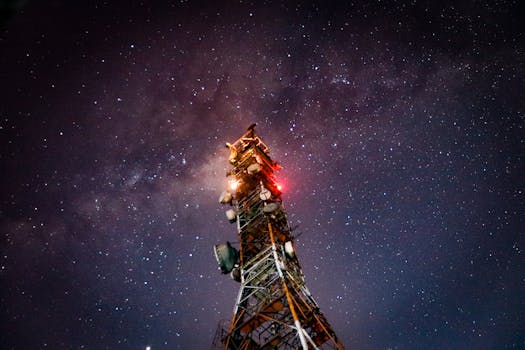
MEO Satellites: Revolutionizing Global Communication with Medium Earth Orbit Technology
Medium Earth Orbit (MEO) satellites are a type of satellite that operates in an orbit between 2,000 and 36,000 kilometers above the Earth’s surface. This orbit is higher than Low Earth Orbit (LEO) satellites but lower than Geostationary Orbit (GEO) satellites. MEO satellites are designed to provide a unique combination of global coverage, high bandwidth, and low latency, making them an attractive solution for a wide range of applications, including satellite communication, navigation, and Earth observation.
History and Development of MEO Satellites
The concept of MEO satellites dates back to the 1960s, when the first satellites were launched into medium Earth orbit. However, it wasn’t until the 1990s that MEO satellites began to gain popularity, with the launch of the first commercial MEO satellite constellation, known as the Iridium system. This system was designed to provide global mobile satellite services, including voice, data, and internet connectivity. Since then, several other MEO satellite constellations have been launched, including the Globalstar and O3b (Other 3 Billion) systems.
Benefits and Applications of MEO Satellites
MEO satellites offer several benefits over other types of satellites, including faster data transfer rates, lower latency, and global coverage. These benefits make MEO satellites ideal for a wide range of applications, including satellite communication, navigation, and Earth observation. Some of the key applications of MEO satellites include:
Mobile satellite services, such as voice, data, and internet connectivity, are one of the primary applications of MEO satellites. MEO satellites can provide global coverage, high bandwidth, and low latency, making them an attractive solution for mobile network operators and service providers. MEO satellites can also be used for navigation, providing location information and timing signals to a wide range of devices, from smartphones to aircraft. Earth observation is another key application of MEO satellites, which can be used to collect data on the Earth’s surface, including weather patterns, sea ice, and land use. MEO satellites can also be used for scientific research, such as studying the Earth’s magnetic field and the effects of space weather on the Earth’s atmosphere.
Challenges and Limitations of MEO Satellites
While MEO satellites offer several benefits, they also face several challenges and limitations. One of the primary challenges is the high cost of launching and operating a MEO satellite constellation. The cost of launching a single MEO satellite can be tens of millions of dollars, and the cost of operating a constellation of satellites can be hundreds of millions of dollars per year. Another challenge is the complexity of managing a MEO satellite constellation, which requires sophisticated ground control systems and network management software. Interference from other satellites and terrestrial systems is also a significant challenge, as it can affect the performance and reliability of MEO satellite communications. Finally, the regulatory environment for MEO satellites is complex and evolving, with different countries and regions having different regulations and requirements for satellite communications.
Future of MEO Satellites
Despite the challenges and limitations, the future of MEO satellites looks promising. Several new MEO satellite constellations are currently under development, including the OneWeb and Amazon Kuiper Systems. These constellations will provide high-speed, low-latency internet connectivity to a wide range of devices, from smartphones to laptops. The development of new technologies, such as advanced propulsion systems and solar panels, will also improve the performance and efficiency of MEO satellites. The growth of the Internet of Things (IoT) and the increasing demand for global connectivity will also drive the adoption of MEO satellite technology. As the technology continues to evolve, we can expect to see new and innovative applications of MEO satellites, from satellite-based 5G networks to MEO-based Earth observation systems.




